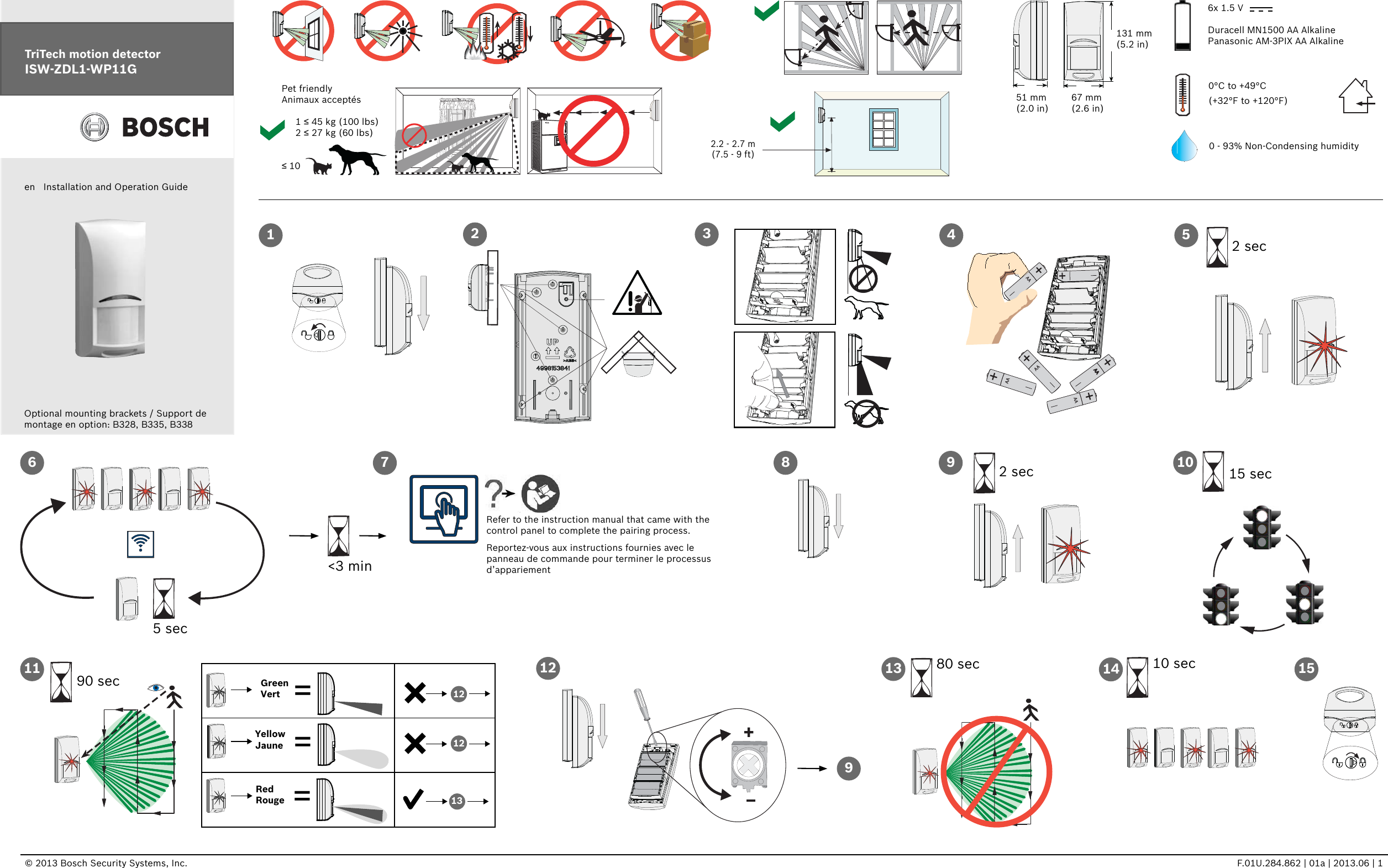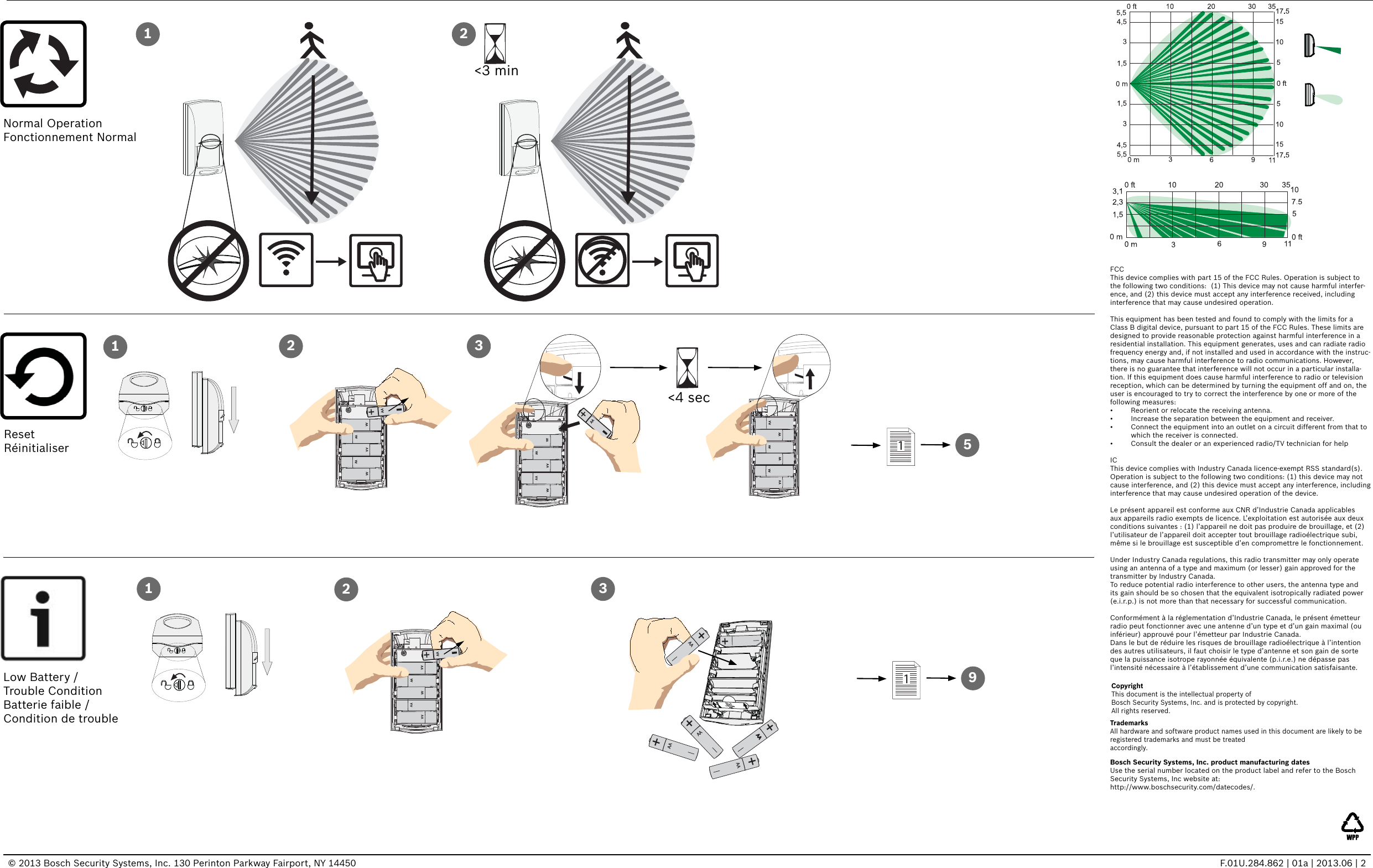Bosch Security Systems ZIGB01 Wireless TriTech Motion Detector for the ISW-ZDL1-WP11G and Wireless PIR Motion detector for the ISW-ZPR1-WP13 User Manual F01U284862 01a ISW ZDL1 WP11G Inguide indd
Bosch Security Systems, Inc. Wireless TriTech Motion Detector for the ISW-ZDL1-WP11G and Wireless PIR Motion detector for the ISW-ZPR1-WP13 F01U284862 01a ISW ZDL1 WP11G Inguide indd
User Manual

